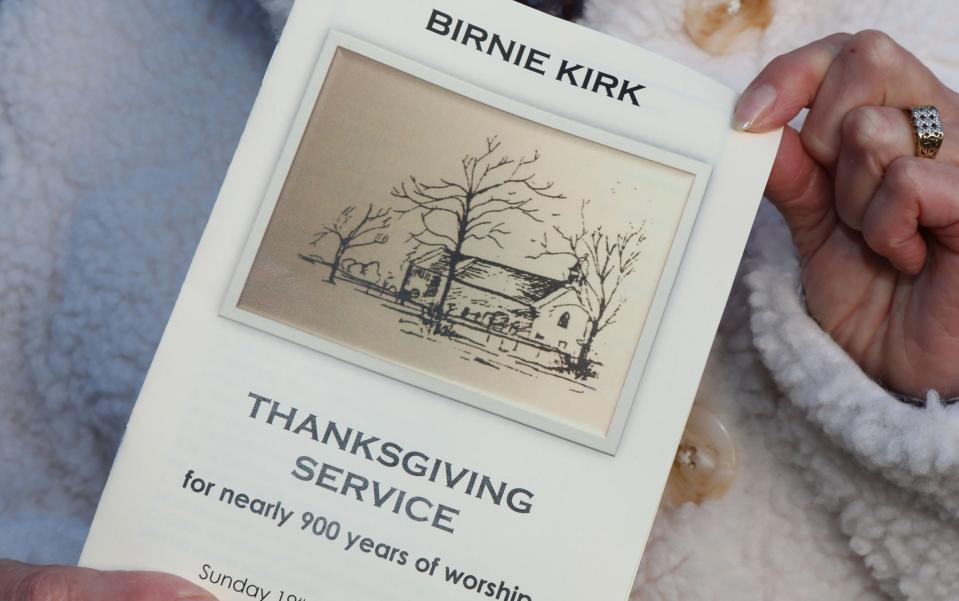Church of Scotland in unholy row with parishioners after it shut 900-year-old church

The Church of Scotland has been accused of disrespecting country dwellers and depriving a rural community of their spiritual home by closing the country’s oldest church.
Birnie Kirk’s near 900-year run as a place of religious worship came to an end at the weekend after the last Sunday service was held within its ancient walls.
Since being built in 1140, the tiny church in Elgin, Moray, has weathered the elements and conflict but has fallen foul of the Kirk’s bean counters as officials seek to balance the books amid falling congregations and rising running costs.
The decision to close the church has upset elderly parishioners, who will have to worship at Elgin parish church, which for some means a 20-mile round trip.

Birnie Kirk’s usual congregation of about 20 people swelled to more than 100 on Sunday as defiant parishioners flocked to the pews.
Gill Garrow, 68, a Kirk elder, said she was “upset” by the Church of Scotland’s decision, which was notified to the congregation in September. She accused officials at 121 George Street, the Kirk’s Edinburgh headquarters, of having “no respect for country folk”.
“They are breaking up a community, a family, where people look out for each other’s needs. This is our spiritual home and when we joined the Kirk we never thought it wouldn’t be there for us,” Ms Garrow said.
“The more people that know what the Church of Scotland is up to, the better. It’s like we’re a forgotten entity. It shows how ruthless they are. I know we’re not the only ones suffering but there’s so much history attached to the church, it’s in great condition. Surely to goodness they can keep it open. Common sense is not prevailing,” she added.

Archaeologists have found evidence to suggest Birnie was a centre of Roman power and an important pre-Christian settlement inhabited by the pagan Picts.
Two hoards of Roman coins have been found nearby and an earlier church dedicated to the Irish missionary Saint Brendan is thought to have given Birnie its name.
It became the first acting cathedral in Moray, predating the grander Elgin Cathedral, and is older than both Glasgow Cathedral and St Giles’ in Edinburgh.
‘Deep personal ties’
May Denoon, 89, told The Daily Mail that she first attended Sunday school at Birnie Kirk as a 16-year-old girl.
“I got married in this church and my husband, Jimmy, is buried in the churchyard. It has deep personal ties for many of those who pray here.”
The Church of Scotland said a five-year mission plan had identified that Birnie Kirk should cease to be a place of worship by 2027. A spokesman said: “While Sunday’s service was the last regular weekly service which will take place at Birnie Church, the building will continue to be maintained by the kirk session pending its release.
“This will allow for the possibility of occasional use, such as for funerals or weddings. There is also an opportunity to organise worship in the Birnie Kirk hall as part of the agreed basis of union.
“However, Birnie Church is still on schedule to be released from Church of Scotland ownership by the end of August 2027.
“Birnie and the joint charge of Plus Carden will unite with Elgin High, Elgin St. Giles’ and St. Columba’s South as single parish to allow us to continue to serve the people of the community in sharing the Good News of Jesus Christ and offering practical support, while making the best use of our resources in increasingly challenging times. The union was voted for overwhelmingly by each of the congregations and will be formerly established on 1st December 2023.
“We are aware of the close emotional ties which people and their communities have with their local church, and we share in the sadness felt when a church is released. Closure of much-loved places of worship is a grief Church of Scotland ministers, elders, members and staff all bear.
“However we do believe radical reform is necessary if we are to address the challenges of falling minister numbers, a decline in membership and a reduction in income both nationally and locally and as part of that process we recognise the need to reduce the number of buildings we own which has become unsustainable for our needs.”

 Yahoo News
Yahoo News 
